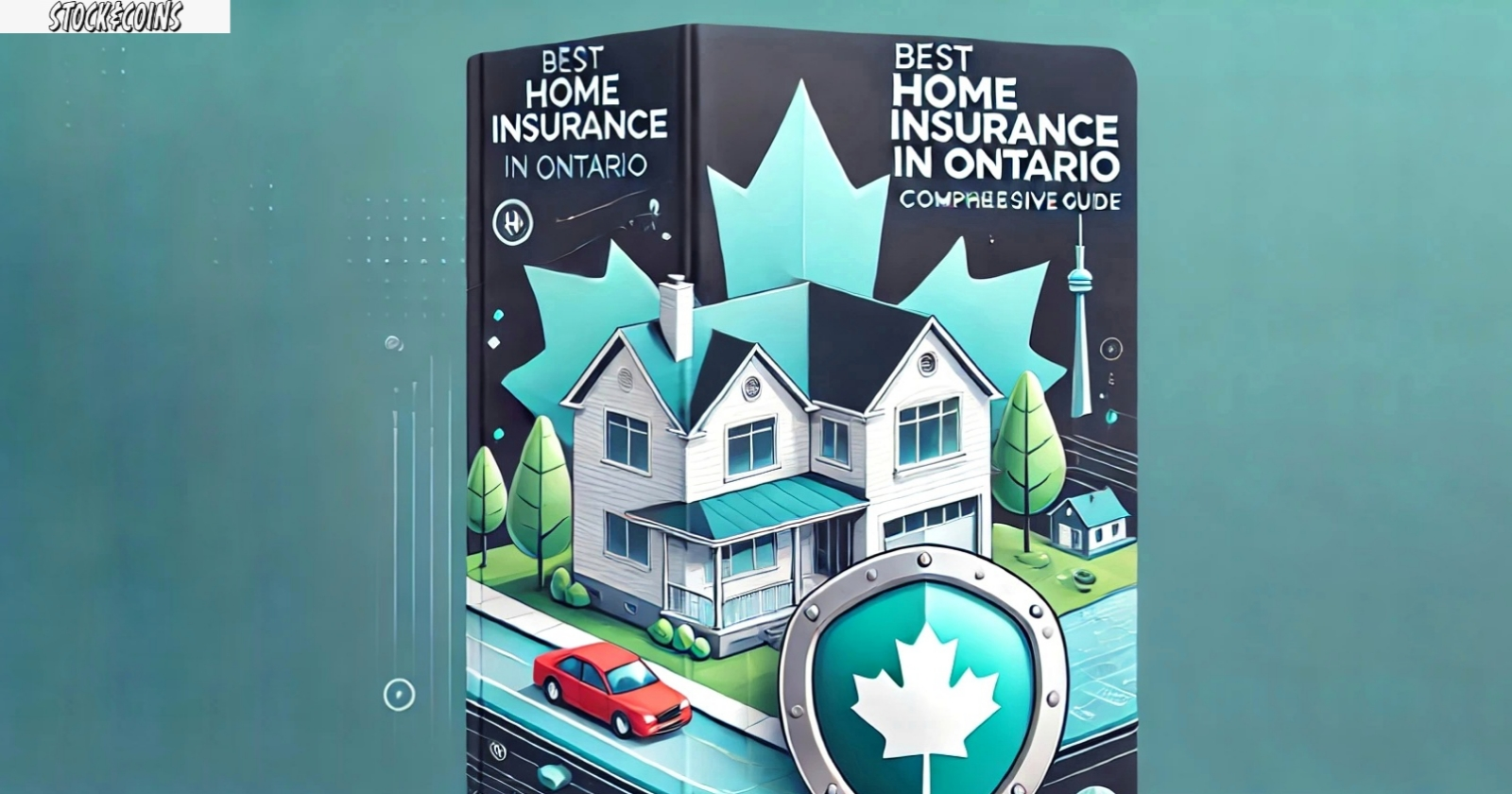Best Home Insurance in Ontario, Canada: A Comprehensive Guide for Beginners
When it comes to protecting your home, one of the most important steps you can take is securing reliable home insurance. In Ontario, Canada, home insurance is more than just a safety net; it’s a smart financial decision that safeguards your most valuable asset. Whether you’re buying a new house or just looking for better coverage, choosing the best home insurance in Ontario can feel overwhelming, especially for beginners.
In this article, I’ll guide you through the essential details you need to know about home insurance in Ontario. From understanding home insurance rates and the differences between comprehensive and basic policies to choosing the top insurance providers and saving on premiums, I’ll provide clear, beginner-friendly explanations. Let’s dive into what makes home insurance crucial, how to choose the best provider, and why the right coverage can make all the difference when life throws you unexpected challenges.
Home Insurance Rates in Ontario
Factors Influencing Home Insurance Rates
Home insurance premiums vary across Ontario, and several key factors influence these rates. Understanding these factors will help you anticipate what to expect when you shop for the best home insurance in Ontario, Canada.
1. Location
Your home’s location plays a significant role in determining insurance premiums. Insurers look at factors like crime rates, proximity to fire stations, and the likelihood of natural disasters (flooding, wildfires) in your area. Homes in urban areas might see higher premiums due to increased risks like theft or vandalism, while those in rural areas could face higher rates if they are far from emergency services.
2. Home Type, Age, and Condition
The type, age, and condition of your home also impact your premiums.
- Type of Home: Detached homes typically cost more to insure than condos or townhomes because there is more to cover.
- Age of the Home: Older homes often carry higher premiums since they may have outdated electrical or plumbing systems that increase the risk of damage.
- Condition: Homes that are well-maintained with recent upgrades (like a new roof or updated plumbing) tend to have lower premiums because they are less prone to claims.
3. Home Value and Replacement Cost
Insurers calculate premiums based on the cost of rebuilding your home in the event of a total loss. This includes labor, materials, and any specialized work that may be required. High-value homes with expensive finishes, custom features, or larger square footage typically cost more to insure.
4. Coverage Type
The level of coverage you choose significantly impacts your premium. Basic coverage costs less but only covers specific perils, while comprehensive coverage, which protects against a broader range of risks, will come with higher premiums. Additional coverage for personal belongings, water damage, or overland flooding can increase your overall costs.
5. Claims History
If you’ve made frequent insurance claims in the past, insurers might view you as a higher risk, resulting in higher premiums. Insurers often offer discounts to homeowners with a clean claims history, so it’s important to only file claims when necessary.
6. Credit Score
In some cases, your credit score may affect your home insurance rate. Insurers may consider a strong credit score as an indicator of responsible financial behavior, leading to lower premiums.
7. Deductible
Your deductible is the amount you’re willing to pay out-of-pocket before your insurance kicks in. Choosing a higher deductible lowers your premium but increases your financial responsibility in case of a claim.
Average Cost of Home Insurance in Ontario
The average home insurance cost in Ontario is approximately $1,250 per year, but it can range anywhere from $700 to $2,000 depending on the factors above. Keep in mind that while lower premiums may seem appealing, ensuring adequate coverage for your home is far more important.
How to Get the Best Rates
- Shop Around: Don’t settle for the first quote you receive. Compare different providers to find the best home insurance in Ontario, Canada.
- Maintain Your Home: Keep your home well-maintained and make updates as needed. This can reduce the risk of claims and lower your premiums.
- Ask About Discounts: Some insurers offer discounts for installing security systems, fire alarms, or bundling your home and auto insurance.
Comprehensive vs. Basic Home Insurance in Ontario: Which Is Right for You?
Choosing the right home insurance policy is a critical step in protecting your home and personal belongings. In Ontario, two primary types of home insurance policies are offered: comprehensive and basic. Knowing the difference between these two can help you make an informed decision based on your needs and budget.
Comprehensive Home Insurance
Comprehensive home insurance is the most extensive form of coverage available. It covers your home and personal belongings against a wide range of risks and perils. This includes coverage for:
- Fire
- Theft
- Vandalism
- Certain types of water damage
- Natural disasters (excluding earthquakes and floods unless added as optional coverage)
Pros of Comprehensive Coverage:
- All-inclusive protection: This policy covers all risks except those specifically excluded in the policy. If you want peace of mind that most damages will be covered, this is the option for you.
- Covers personal belongings: Beyond protecting your home, comprehensive insurance covers the replacement or repair of personal belongings such as furniture, electronics, and clothing.
- Liability coverage: In the event that someone is injured on your property, this policy also provides liability coverage, protecting you from legal claims.
Cons of Comprehensive Coverage:
- Higher premiums: Since this policy offers more coverage, it typically comes with a higher price tag. Homeowners who choose this option need to balance the cost with the value of the coverage provided.
- Exclusions: While it covers most risks, certain perils like earthquakes and overland water damage (flooding) are excluded unless you specifically add them to your policy.
Basic Home Insurance
Basic home insurance, often called “named perils” coverage, is more limited in scope. It covers only the specific risks mentioned in the policy, such as fire, windstorms, or theft. Any peril not explicitly named is excluded from coverage.
Pros of Basic Coverage:
- Lower premiums: The most significant advantage of basic home insurance is that it is more affordable than comprehensive coverage. If you’re on a budget, this option can provide essential protection without breaking the bank.
- Flexible coverage: You can choose which perils you want coverage for, tailoring the policy to your specific concerns.
Cons of Basic Coverage:
- Limited protection: Since it only covers named perils, this policy leaves you exposed to many risks that aren’t specified. For instance, if your home is damaged by an event not listed in the policy, you won’t be covered.
- No blanket coverage for personal belongings: Unlike comprehensive policies, basic insurance may not cover personal belongings or offer only limited protection for specific items.
Which Policy Is Right for You?
Choosing between comprehensive and basic insurance largely depends on your personal circumstances:
- If you live in an area prone to natural disasters or if your home has a high replacement value, comprehensive insurance might be the best choice for peace of mind.
- If you’re looking to save on premiums and your home isn’t at high risk for certain perils, a basic policy could be sufficient.
It’s essential to review your needs, budget, and the value of your home when deciding which policy is best. Personally, I lean towards comprehensive coverage for the extra security it provides, especially considering the unpredictability of life’s risks.
Top Home Insurance Providers in Ontario 2024
When looking for the best home insurance in Ontario, Canada, it’s crucial to know which providers stand out in the market. In 2024, several companies are recognized for their excellent customer service, competitive pricing, and unique coverage options. Here’s a detailed breakdown of the top home insurance providers in Ontario:
1. Intact Insurance
Intact Insurance is one of the largest and most trusted home insurance providers in Ontario. With a solid reputation for customer service and a wide range of coverage options, they cater to various homeowner needs.
- Strengths: Intact offers flexible coverage options, including comprehensive, basic, and customizable add-ons like water damage protection. Their customer service is well-regarded, and they have a fast, efficient claims process.
- Pricing: Mid-range to high, depending on the coverage options chosen.
- Unique Benefits: Intact offers a “Claims Service Guarantee,” promising quick and reliable claims processing, and they partner with local contractors to help with repairs.
2. Aviva Canada
Aviva is another major player in the Ontario home insurance market, known for its competitive rates and broad coverage options. They are particularly strong in providing add-ons for specific risks, like flood or earthquake damage.
- Strengths: Aviva offers excellent discounts for bundling home and auto insurance and is known for offering tailored packages for different types of homes.
- Pricing: Affordable, especially with bundling discounts.
- Unique Benefits: Aviva offers a “Claims Prevent” program that helps homeowners prevent future claims through home maintenance and risk mitigation support.
3. Desjardins Insurance
Desjardins is known for its customer-centric approach and flexibility in insurance offerings. As a cooperative financial institution, Desjardins provides excellent service to members and offers tailored solutions.
- Strengths: Desjardins is praised for its customer service and offers various discounts, especially for new homeowners or those with no previous claims.
- Pricing: Competitive, with discounts for being claims-free or bundling insurance policies.
- Unique Benefits: They provide a personalized experience with local agents and brokers, helping customers find the best coverage for their specific needs.
4. TD Insurance
TD Insurance is part of TD Bank Group, one of the largest financial institutions in Canada. They offer comprehensive home insurance packages with competitive pricing.
- Strengths: TD is known for its competitive pricing and ease of online account management, making it a convenient option for tech-savvy homeowners.
- Pricing: Affordable, especially for customers who bundle with TD auto insurance.
- Unique Benefits: TD offers “Accident Forgiveness,” which ensures that your first claim doesn’t affect your premiums.
5. The Co-operators
The Co-operators is a well-known Canadian insurance company that offers a wide range of insurance products, including home insurance, with a focus on sustainability and community involvement.
- Strengths: They provide excellent customer service and are particularly noted for their environmentally friendly coverage options.
- Pricing: Competitive, with discounts for eco-friendly home upgrades.
- Unique Benefits: Their “Green Home” program provides discounts for homes that are certified environmentally sustainable.
Choosing the right provider ultimately depends on your specific needs, budget, and preferences. Personally, I appreciate companies that offer flexible, customizable plans like Intact Insurance and Aviva. These companies allow you to adjust your coverage to meet your specific needs without overpaying for unnecessary extras.
How to Save on Home Insurance in Ontario
Home insurance can be costly, but there are several ways you can reduce your premiums without sacrificing coverage. Here are some practical tips to help you save on your home insurance in Ontario:
- Bundle Insurance Policies: Many insurers offer discounts when you bundle your home and auto insurance policies with the same provider. This is one of the easiest ways to save on premiums.
- Increase Your Deductible: Opting for a higher deductible means you’ll pay more out-of-pocket if you file a claim, but it also results in lower premiums. Choose a deductible you’re comfortable with financially.
- Install Security Systems: Installing a home security system, smoke detectors, and carbon monoxide detectors can reduce your risk of theft or fire, which in turn can lead to discounts from your insurance provider.
- Maintain a Clean Claims History: Insurance companies often offer discounts to homeowners who have not made any claims in recent years. Being mindful about when to file a claim can save you money in the long run.
- Home Upgrades: If you upgrade your home’s electrical or plumbing systems, or if you install a new roof, your insurer may reduce your premiums because these updates lower the risk of damage.
By following these tips, you can find the best home insurance in Ontario, Canada, at a more affordable price.
Understanding the Claims Process for Home Insurance in Ontario
Filing a home insurance claim can be a stressful experience, especially if you’ve never done it before. Understanding the process will help you navigate it more smoothly.
Step-by-Step Guide to Filing a Home Insurance Claim:
- Report the Incident: Contact your insurance provider as soon as possible to report the incident. Be prepared to provide details about the damage, when it occurred, and any immediate steps you’ve taken to prevent further loss (e.g., boarding up a broken window).
- Document the Damage: Take photos or videos of the damage to your home and belongings. This will serve as evidence when your insurer assesses the claim.
- Submit Your Claim: Your insurer will ask you to fill out a claim form and submit any necessary documentation. Be as detailed as possible when describing the event and the damages.
- Work with the Adjuster: An insurance adjuster may visit your home to assess the damage. They will provide a report that helps determine the compensation you’ll receive.
- Receive Compensation: Once the claim is approved, your insurer will issue a payment based on your policy’s coverage and the adjuster’s assessment.
Typical Timeline
The timeline for receiving compensation varies depending on the complexity of the claim. For straightforward cases, it may take a few weeks, while more complicated claims could take several months.
Understanding the claims process can make dealing with an unfortunate event a little less daunting. The key is to document everything thoroughly and maintain open communication with your insurer.
Specialized Coverage Options for Ontario Homeowners
Standard home insurance policies often don’t cover every potential risk, which is why specialized coverage options are essential for many homeowners in Ontario. Here are some additional coverage options you might want to consider:
1. Overland Water Protection
This coverage is designed to protect against damage caused by water entering your home due to heavy rainfall, spring runoff, or overflowing rivers. Flooding can be devastating, and without this additional coverage, you could be left paying for repairs out-of-pocket.
2. Earthquake Insurance
While earthquakes are relatively rare in Ontario, they can happen. Standard home insurance policies typically exclude earthquake damage, so if you live in an area that could be affected, consider adding this coverage to your policy.
3. Sewer Backup Coverage
Sewer backups can cause significant damage to basements and other areas of your home. This optional coverage protects you from the costs of cleanup and repair.
4. Identity Theft Protection
Some home insurance policies offer add-ons for identity theft protection, which covers the costs associated with restoring your identity and finances in the event of theft.
Adding these specialized coverages ensures that you are fully protected from a wide range of potential risks. I personally recommend overland water protection for homeowners in flood-prone areas, as water damage can be incredibly costly to repair.
FAQs
1. What is the average cost of home insurance in Ontario?
> The average cost of home insurance in Ontario ranges from $1,250 to $1,500 per year, depending on the location, value, and condition of your home, as well as the type of coverage you choose.
2. Is home insurance mandatory in Ontario?
> No, home insurance is not legally required in Ontario. However, most mortgage lenders will require you to have a policy in place before approving your mortgage.
3. What does home insurance typically cover?
> Standard home insurance policies typically cover your home, detached structures (like garages), personal belongings, and liability in case someone is injured on your property. It may also cover temporary living expenses if your home becomes uninhabitable.
4. Does home insurance cover water damage?
> It depends on the type of water damage. Standard policies usually cover water damage from burst pipes or leaks, but you may need additional coverage for sewer backups or overland flooding.
5. How can I reduce my home insurance premiums?
> You can reduce your premiums by increasing your deductible, installing home security systems, maintaining a clean claims history, and bundling your home and auto insurance.
6. What is the difference between replacement cost and actual cash value?
> Replacement cost refers to the amount it would take to rebuild your home with new materials, while actual cash value takes depreciation into account. Replacement cost coverage is more expensive but offers better protection.
7. Can I change my home insurance provider anytime?
> Yes, you can switch home insurance providers at any time. However, make sure to check if your current provider charges cancellation fees.
8. Do I need special coverage for valuable items?
> If you own high-value items like jewelry, art, or collectibles, you may need to add a rider to your policy to ensure these items are fully covered.
9. What is liability coverage in home insurance?
> Liability coverage protects you if someone is injured on your property or if you accidentally cause damage to someone else’s property. It covers legal costs and any awarded compensation.
10. How do I choose the best home insurance in Ontario, Canada?
> To choose the best home insurance in Ontario, compare different providers, assess your coverage needs, and look for providers that offer discounts and excellent customer service.




